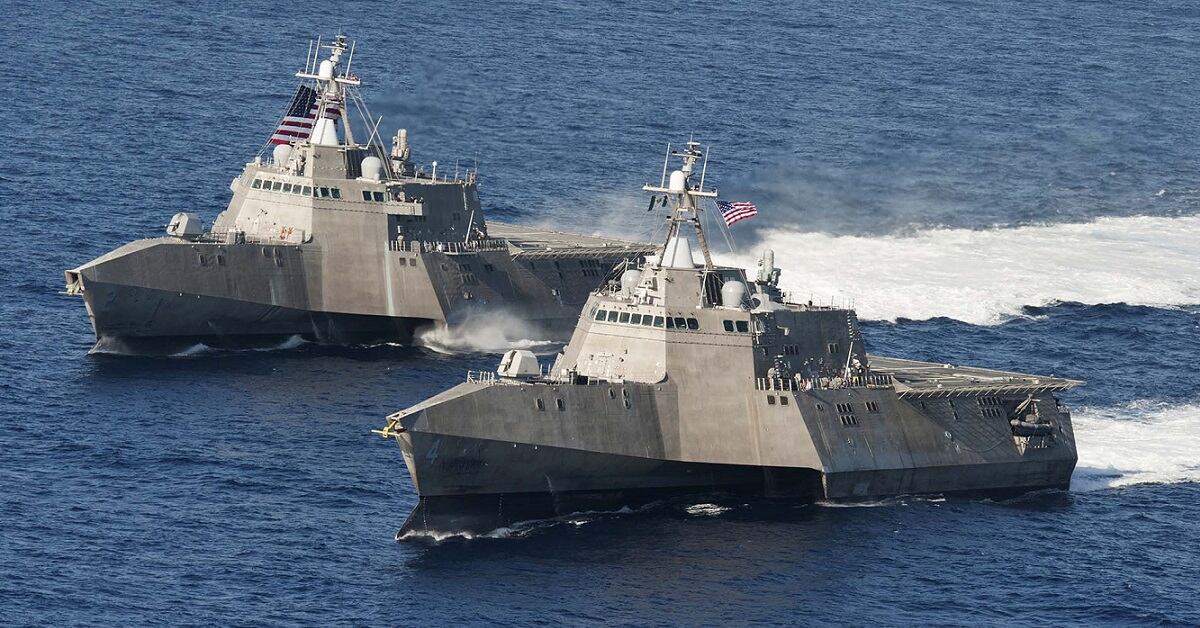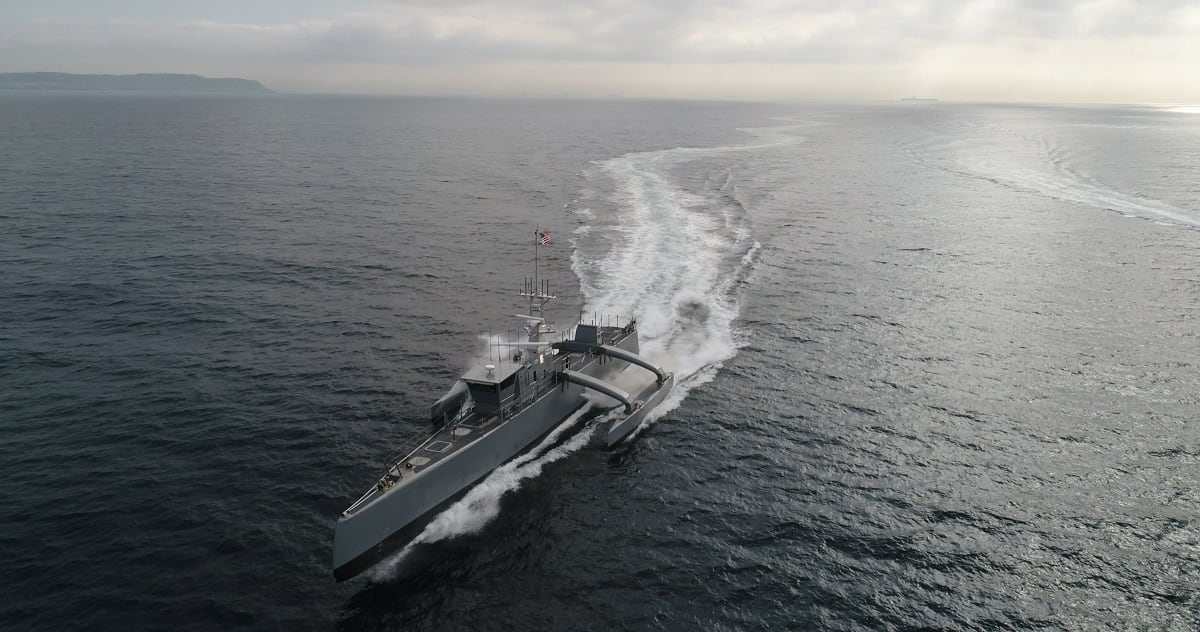LANSDALE, Pa. — A small but potentially significant change in the Pentagon’s five-year budget projection slows down the buying profile for the U.S. Navy’s new frigate, which is expected to be awarded in 2020, according to a memo from the White House’s Office of Management and Budget to the Department of Defense, and obtained by Defense News.
The Navy’s 30-year shipbuilding plan submitted to Congress with the 2020 budget showed the Navy planned to buy one FFG(X) in 2020, then it had planned to buy two every year until 2030, when it would buy the last of the planned 20-ship program. That would mean the next Future Years Defense Program, or FYDP, in the 2021 budget would be for 10 FFG(X).
But the Dec. 16 memo from OMB, which responded to the Navy’s submitted budget, shows the service planning to request just one FFG(X) each in 2021 and 2022. Then the buy jumps to two per year for 2023 and 2024, and increases to three in 2024, the last year of the FYDP.
The proposal also cuts a Virginia-class submarine out of the budget. The 30-year shipbuilding plan shows two attack submarines per year through the next decade, but the OMB memo shows the Navy requesting just one in 2021, before returning to the two-per-year profile for the remainder of the FYDP. The single fiscal 2021 Virginia-class submarine, which is planned as an expanded Virginia Payload Module Block V submarine, is listed at $3.86 billion.
The reason for the change is not addressed in the memo, and a Navy spokesman declined to comment on the substance of the document, citing a Navy policy not to comment on budget matters before they are finalized and sent to Congress.
While pushing off a single FFG(X) and Virginia-class sub to later years isn’t much cause for alarm, the Pentagon proposal does come packaged with a dramatic series of other cuts to both current Navy force structure and planned ship construction.
RELATED

The surface Navy and experts see the FFG(X) as a vital program to put credible weapons systems and sensors on a small, less expensive platform that the Navy can buy more of than the current fleet of destroyers, which cost nearly $2 billion per hull. The memo shows the unit cost of an FFG(X) at $955 million per hull. More ships to act as nodes in a spread-out network of ships and sensors is key to making the Navy’s distributed maritime operations concept work.
The FFG(X) is also key to the drive toward a 355-ship Navy, which the Trump administration considers a priority. Indeed, the memo from OMB directs the Pentagon to submit a “resource informed” plan to get to 355 ships, which is current national policy. The memo says the Navy should come back with a plan to include unmanned vessels, such as its planned large unmanned surface vessel, in the ship count.
Still, the FFG(X) and Virginia programs fared better than others. The same proposal cut five of the planned 12 Flight III Arleigh Burke-class destroyers out of the budget, and essentially directs the Navy to cancel its Common Hull Auxiliary Multi-Mission Platform program. The proposal also accelerated the decommissioning of three dock landing ships and four cruisers, as well as the first four littoral combat ships.
A Trump administration source pointed the finger at the Office of the Secretary of Defense for the cuts, saying the Navy and OMB are on board for 355 ships.

Getting smaller
The Navy sees the push to get smaller, enabled by smaller platforms such as LUSV and FFG(X), as vital to the drive to grow the fleet and take on competitors such as China and Russia.
In that light, the proposal to deemphasize the Flight III DDG in the FYDP is less surprising. It’s a move the Navy began signaling early last year.
“Today, I have a requirement for 104 large surface combatants in the force structure assessment; I have 52 small surface combatants,” Adm. Ronald Boxall said when he was the head of surface warfare for the Navy. “That’s a little upside down. Should I push out here and have more small platforms? I think the future fleet architecture study has intimated ‘yes,’ and our war gaming shows there is value in that.”
RELATED

The paradigm shift is moving the fleet away from platforms like the Arleigh Burke-class destroyers — enormous, tightly packed ships bristling with capabilities, weapons and sensors, but enormously expensive to build, maintain and upgrade.
“It’s a shift in mindset that says, instead of putting as much stuff on the ship for as much money as I have, you start thinking in a different way,” Boxall said in an interview with Defense News in January. “You start saying: ‘How small can my platform be to get everything I need to be on it?’
“We want everything to be only as big as it needs to be. You make it smaller and more distributable, given all dollars being about equal. And when I look at the force, I think: ‘Where can we use unmanned so that I can push it to a smaller platform?’ ”
‘It’s unavoidable’
But part of the Navy’s effort to get smaller is based on necessity: The service is on the hook for an enormous modernization bill for the Columbia-class ballistic missile submarine, something Chief of Naval Operations Adm. Michael Gilday said at a recent forum will remain the Navy’s top priority no matter the impact on the shipbuilding budget.
“The Navy’s first acquisition priority is recapitalizing our Strategic Nuclear Deterrent — Electric Boat is helping us do just that,” Gilday said. “Together, we will continue to drive affordability, technology development, and integration efforts to support Columbia’s fleet introduction on time or earlier.”

The service has been driving toward fielding the Columbia’s lead ship by 2031, in time for its first scheduled deployment. Construction of the first boat will begin in October 2020, though the Navy has been working on components and design for years.
In comments at a recent forum, Gilday said that everything the Navy is doing to reinvent its force structure around a more distributed concept of operations — fighting in a spread-out manner instead of aggregated around an aircraft carrier — would have to be worked around the Columbia class, which will take up a major part of the service’s shipbuilding account in the years to come.
“It’s unavoidable,” Gilday said, referring to the cost of Columbia. “If you go back to the ’80s when we were building Ohio, it was about 35 percent of the shipbuilding budget. Columbia will be about 38-40 percent of the shipbuilding budget.
“The seaborne leg of the triad is absolutely critical. By the time we get the Columbia into the water, the Ohio class is going to be about 40 years old. And, so, we have to replace that strategic leg, and it has to come out of our budget right now. Those are the facts.”
David B. Larter was the naval warfare reporter for Defense News.








